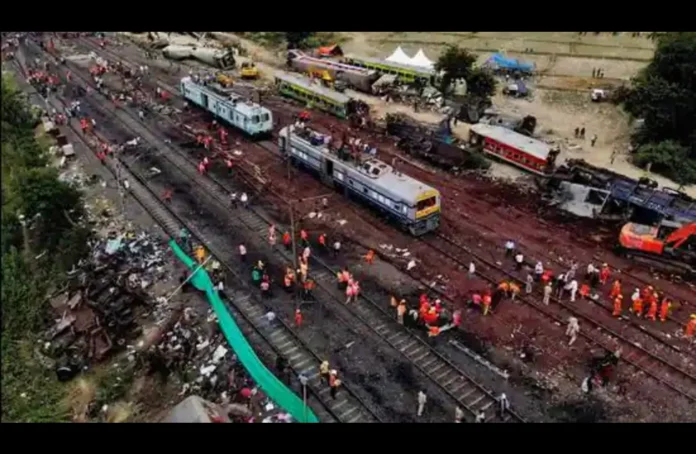In a shocking turn of events, a train accident occurred in Odisha, leaving many injured and raising concerns about the safety of the Indian railway network. The Union Railways Minister has attributed the incident to a recent change in the electronic interlocking system, which is responsible for managing train movements and ensuring safe operations. This revelation has sparked debates and calls for an urgent review of the railway infrastructure. The accident took place when two trains collided head-on near a major junction in Odisha.
The impact resulted in several coaches derailing, causing chaos and panic among the passengers. Local authorities and rescue teams were immediately dispatched to the site to provide medical aid and assist with the evacuation process. Preliminary investigations into the incident revealed that a malfunction in the electronic interlocking system might have been the primary cause. The Union Railways Minister, while addressing the media, expressed deep concern over the accident and assured the public that a thorough investigation would be conducted to ascertain the exact cause and hold those responsible accountable. He further highlighted the recent implementation of an upgraded electronic interlocking system, which was intended to enhance operational efficiency and safety standards across the rail network. However, it seems that this change has inadvertently led to the unfortunate mishap in Odisha. The electronic interlocking system plays a critical role in ensuring the smooth movement of trains by managing signals, points, and track circuits. By electronically controlling these elements, the system prevents conflicting movements and helps maintain safe distances between trains.
Any failure or malfunction in this system can have severe consequences, as witnessed in the Odisha incident. The minister’s statement has triggered discussions among experts and railway officials regarding the adequacy of the safety protocols and the need for periodic assessments of technological upgrades. Many argue that while advancements in technology can undoubtedly improve efficiency, they must be implemented cautiously, with extensive testing and validation, to minimize the potential risks associated with operational disruptions. The Indian Railways, one of the largest rail networks in the world, carries millions of passengers daily. Ensuring the safety and security of this vast network remains a paramount responsibility. The recent accident in Odisha serves as a stark reminder of the importance of robust infrastructure and rigorous safety measures in maintaining the integrity of the railway system.
As the investigation into the incident unfolds, railway authorities are expected to work closely with experts and relevant stakeholders to identify the lapses in the electronic interlocking system and implement corrective measures promptly. Public confidence in the safety of train travel must be restored, and the lessons learned from this incident should be instrumental in preventing similar accidents in the future. In conclusion, the train accident in Odisha has shed light on the consequences of a change in the electronic interlocking system. The Union Railways Minister’s acknowledgment of this factor emphasizes the need for thorough investigations, improvements in safety protocols, and cautious implementation of technological upgrades to prevent such mishaps and ensure the well-being of passengers and the smooth functioning of the Indian railway network.


